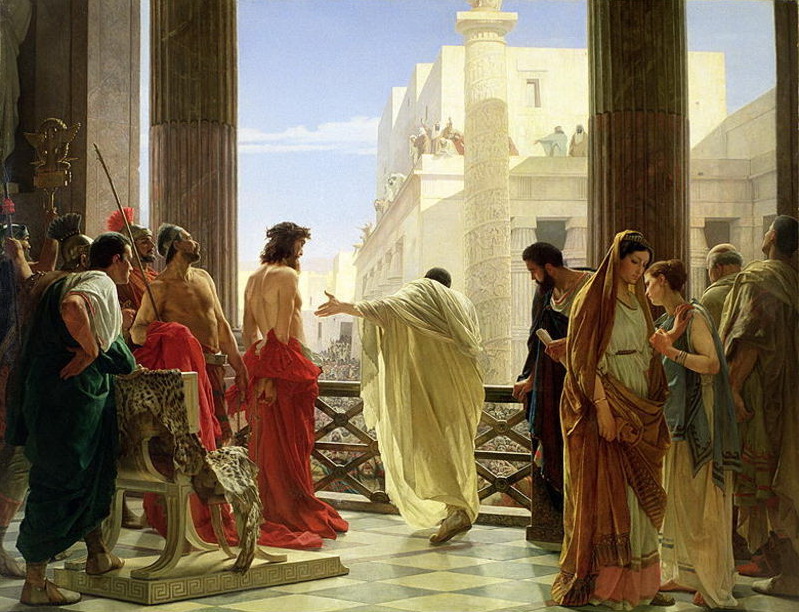The story of Jesus Christ’s life is one of the most well-known in history. From the holy books that make up the Bible to historical accounts written by non-Christians, we have many records detailing how the Messiah lived and died.
While the latter years of Jesus’ life have been extremely well-documented, his early years are much harder to recount. The New Testament is considered the authoritative source of information on Jesus’ life, but it is remarkably short on details about his childhood.
To know more about how Jesus grew up, we have to turn to apocryphal sources and lesser-known myths and legends. While these stories may not be considered official canon, they help us better understand the kind of person Jesus was before he began his ministry.

What Do We Know About Jesus’ Childhood?
Going by what is written in the Bible, we can paint a rough sketch of what Jesus’ childhood looked like. This information makes up some of the best-known parts of Jesus’ biography. From the Bible, we learn that the Virgin Mary became pregnant with Jesus through immaculate conception.
When Mary and her husband were traveling from their home in Galilee toward Bethlehem, Mary went into labor and delivered Jesus in a manger.
As the infant entered the world, a new star appeared in the sky, drawing three wise men known as the magi. They took it as a sign of the King of the Jews’ arrival. The magi traveled to Bethlehem to present the newborn Jesus with gifts befitting his lofty station.
This part of the New Testament is the root of the famous nativity scenes we see reenacted in dioramas and stage plays every Christmas.
The stories about Jesus in the New Testament contain references to books that are part of the Old Testament. These books contain prophecies about a Messiah who would lead the faithful into the Kingdom of God. King Herod, who was King of Judaea when Jesus was born, feared that this new prophet would usurp his throne.
In order to protect his reign, Herod ordered the death of all male children under the age of two. Joseph and Mary fled with Jesus from Judaea to Egypt to avoid the purge.
The family returned to their home after King Herod’s death. They stayed in Nazareth, which is why Jesus Christ is also sometimes referred to as “Jesus of Nazareth” or “the Nazarene.” The Bible is silent on Jesus’ years in Nazareth. The next mention of young Jesus is an episode where the family visits Jerusalem for Passover.
After the festival, as they were returning to Nazareth, Mary and Joseph realized their eldest child was not with them. After a frantic search that lasted three days, they discovered Jesus discussing scripture and matters of faith with the priests in the temple. This is the final mention of Jesus as a child in the Bible.
In his next appearance, he is a grown 30-year-old man who has embraced his role as a preacher and religious leader.
Biblical Sources About Jesus as a Child
These anecdotes in the Bible are the only canonical source of knowledge about Jesus’ childhood. All we know is contained in the four Gospels of Mark, Matthew, Luke, and John. They paint a picture of the person Jesus would become, highlighting qualities such as grace, precocious wisdom, and respect for God. These are the characteristics one would expect to see in the Son of God, which is why they were included in the Bible as canon.
Still, these stories from the New Testament leave large gaps in the timeline of Jesus’ life. After the episode in the Temple of Jerusalem, we have no account of what Jesus was doing from age 12 to 30 before he received his baptism from John the Baptist.
They also don’t mention Jesus as a small child growing up in Galilee. To know more about these parts of Jesus’ life, we must turn to sources beyond the Bible.
Non-Canonical Tales of Young Jesus
The four Gospels that tell us about Jesus’ childhood are believed to have been divinely inspired, which is why they were included in the Bible. Also, the texts were originally written either during or shortly after Jesus’ lifetime, adding to their authenticity.
While other information about Jesus’ life exists, they were only written in the 2nd century AD, which means they are not contemporary accounts and therefore not as reliable as the canon Gospels.
This collection of apocryphal texts is known as the infancy gospels. The infancy gospels provide us with further details about Jesus’ childhood that were not included in the Bible itself.
They are not as widely accepted as the gospels of Mark, Matthew, Luke, and John because they were written decades after Jesus’ crucifixion, and because they contain stories that contradict the divinely inspired truths chronicled in the New Testament.
The infancy gospels include texts like the Protoevangelium of James, the Gospel of Pseudo-Matthew, and the History of Joseph the Carpenter. They contain stories about Mother Mary and the rest of the holy family.
The Infancy Gospel of Thomas
Not to be confused with the similarly named Gospel of Thomas, which was a collection of over a 100 sayings attributed to Jesus, the Infancy Gospel of Thomas is the oldest known source of knowledge about the childhood of Jesus.
It was written at some point during the 2nd century AD and was never accepted into the canon. In fact, it was considered heretical during the early years of Christianity in the 4th and 5th centuries.
This apocryphal gospel contains stories about Jesus as a child that are not mentioned at all in the Bible. Indeed, the only overlap between this text and the canonical gospels is the story of 12-year-old Jesus having a dialog with the priests in the Temple of Jerusalem.
The other stories contained in this text are tales that are not mentioned in any other source. At times, they directly contradict what we are told about Jesus’ life in the New Testament.
A Child of Miracles… and Curses
We’ve all heard the story of Jesus turning water into wine at a wedding in Cana. In the New Testament, this episode is the first time that Jesus provides proof that he really is the Son of God.
However, the Infant Gospel of Thomas attributes further miracles to Jesus, which are both benevolent and punitive in nature. The duality seen in the Infancy Gospel of Thomas corresponds to what one would expect from a young child who hadn’t yet fully grasped the concepts of morality.
One of the most striking stories in this non-scriptural text is a tale where a young Jesus is playing with other children by a stream on the Sabbath. He begins sculpting sparrows out of the soft clay by the stream’s banks. When rebuked by a passing elder, Jesus commands his clay birds to take flight, and to everyone’s surprise, they come to life and fly away!
Other miracles recorded in this text include young Jesus raising people from the dead, growing a hundred bushels of wheat after planting a single grain, and instantaneously healing a man’s foot after he wounded it with an ax. However, the Infancy Gospel of Thomas also contains accounts of young Jesus using his divine powers in less benevolent ways.
It records instances where young Jesus curses another boy in the village to wither like a tree, killing him instantly. He is also said to have cursed anyone who complained about his actions with blindness.
Clearly, such stories do not align with the depiction of Jesus that most Christians are familiar with. Maybe it was this incongruence that led them to be left out of accepted scripture. Regardless, the Infancy Gospel of Thomas is one of the oldest sources of information we have about Jesus’ childhood outside of the Bible.
The “Lost Years” of Jesus Christ
While the infancy gospels give us details about Jesus’ childhood, his adolescence and growth into an adult remain a mystery. This portion of his life, from 12 to 29 years old, is referred to as the unknown years, lost years, or silent years.
While a Biblical record of this period is absent, there are several esoteric theories about what happened during the 18 unrecorded years of Jesus’ adolescence and youth. These range from plausible to far-fetched, and each one has its own supporting evidence and believers.
Some of the simplest theories about the unknown years posit that Jesus remained in Galilee. In the New Testament, Jesus is referred to as a carpenter in the Gospels of Mark and Matthew. We know his father, Joseph, was a carpenter by profession, which lends this further credence.
Another passage sees Jesus declare that he is a shepherd, though this could be a metaphorical usage of the term. However, it is possible that Jesus spent the 18 years from 12 to 29 occupied in one of these humble professions.
It’s also possible that Jesus spent this time acquiring knowledge of the holy scriptures. A couple of theories support this. One claims that Jesus remained at the Temple of Jerusalem after the age of 12, learning from the priests.
Another theory holds that he spent a portion of his lost years living with and learning from John the Baptist, culminating in his reappearance in the Bible at the time of his baptism.
Then, there are the most far-fetched theories about the lost years, which have the fewest supporters among theological experts.
These are the tales that have Jesus wandering the world. Some of the places that he is suggested to have visited during this time are Egypt, India, Tibet, and Britain. There are even some sources that claim he visited the New World! These theories all come from texts written centuries after Jesus’ crucifixion, and are not given the same weight as scripture.
While there is debate regarding Jesus’ childhood and lost years, there’s no disputing his influence, which gave rise to the world’s largest religion. For a man who lived nearly 2,000 years ago, his teachings are still relevant and bring comfort to the millions whose lives have been touched by it.

